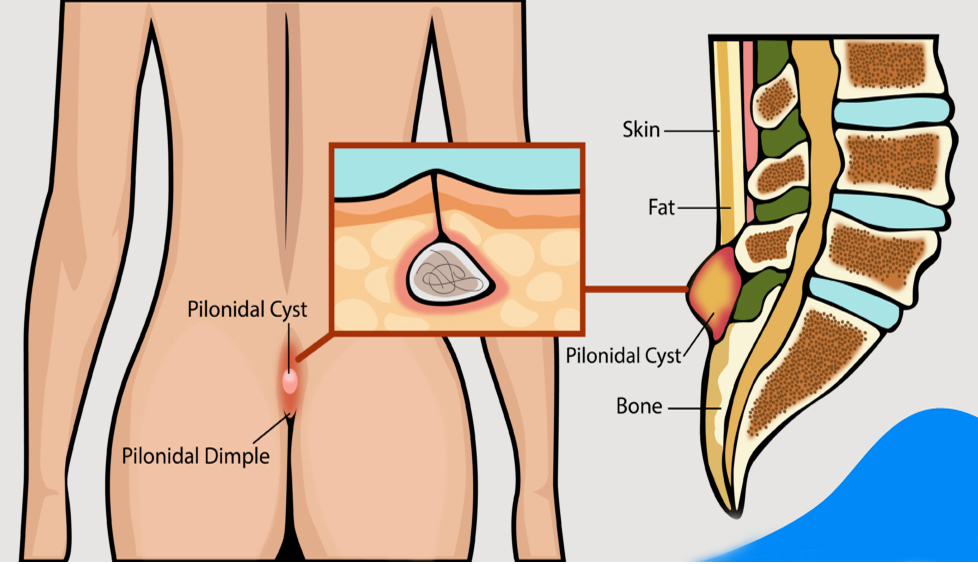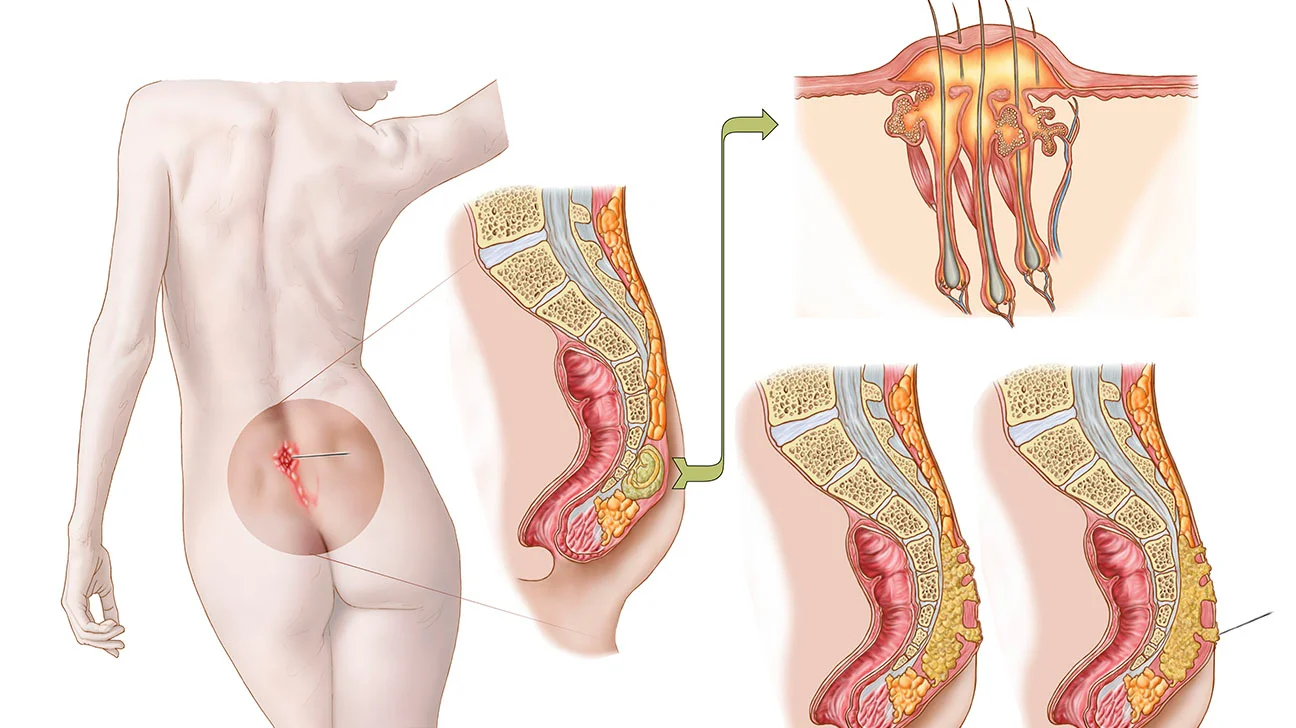Why Opt for Pilonidal Sinus Treatment?

PILONIDAL SINUS DISEASE
Pilonidal sinus disease is an inflammatory condition involving the hair follicles that can occur anywhere along the crease between the buttocks, which runs from the bone at the bottom of the spine to the anus.
PILONIDAL DISEASE MAY APPEAR AS
- A pilonidal cyst in which a cyst or hole forms if there has been an abscess for a long time. Pilonidal cyst is a round sac of tissue filled with air or fluid located in crease of buttocks.
- A pilonidal sinus in which a tract grows under the skin or deeper from the hair follicle.
- Pilonidal abscess, in which the hair follicle becomes infected and pus collects in the fat tissue.
- A small pit or pore in the skin that contains dark spots or hair.

CAUSES OF PILONIDAL SINUS DISEASE
Mostly it is caused by hair growing into the skin. Predisposing factor are obesity, trauma or irritation of the area, excess body hair (coarse and curly hair).
SIGNS & SYMPTOMS OF PILONIDAL SINUS
SIGNS & SYMPTOMS OF PILONIDAL SINUS
Benefits of Laser Treatment
|
Open Surgery
|
Laser Surgery
|
|
|---|---|---|
| Scars & Stitches |
MULTIPLE
|
MINIMAL
|
| Procedure |
Painful
|
Minimal Pain
|
| Blood Loss |
HIGH
|
LOW
|
| Infection Chances |
HIGH
|
LOW
|
| Recovery |
BED REST
|
FAST RECOVERY
|
| Hospital Duration |
LONG
|
SHORT
|
| Technology |
OUTDATED
|
ADVANCED
|
TREATMENT OPTIONS

- Surgical removal in most cases. Surgery is required to remove the infected tissue and hair follicles.
- Laser therapy laser is used to remove infected tissue with less invasive techniques.
- Endoscopic pilonidal sinus treatment (EPSIT) is a procedure that uses an endoscope to treat a pilonidal sinus. The endoscope is a thin, flexible tube with a camera on the end.
Frequently Asked Questions
You can prevent a pilonidal sinus infection by washing the area on a daily bases with a mild soap making sure all soap is removed, keeping the area completely dry, and avoiding sitting for long periods
There are a number of complications that may arise from pilonidal sinus infection. These includes wound infection and a recurrence of the infection even after surgery.
Exact cause of pilonidal sinus is unclear.
1) It is thought to be caused by loose hair piercing the skin.
2) Being overweight.
3) Prolong sitting hours.
A pilonidal sinus can occur in many different areas of the body, but most are found in the sacrococcygeal area, in the natal cleft, approximately 5 cm from the anus.
Small, non-infected sinuses may sometimes resolve on their own, but most require treatment to prevent recurrence
No, a pilonidal sinus is not contagious.
People with thick, coarse body hair, those who sit for long periods, and individuals with a family history of pilonidal sinuses may be at higher risk.
• Conservative management: For small, non-infected sinuses, doctors may recommend keeping the
area clean, shaving the hair, and applying warm compresses.
• Surgical removal: For larger or recurrent sinuses, surgery is usually required to remove the infected
tissue and close the opening.
